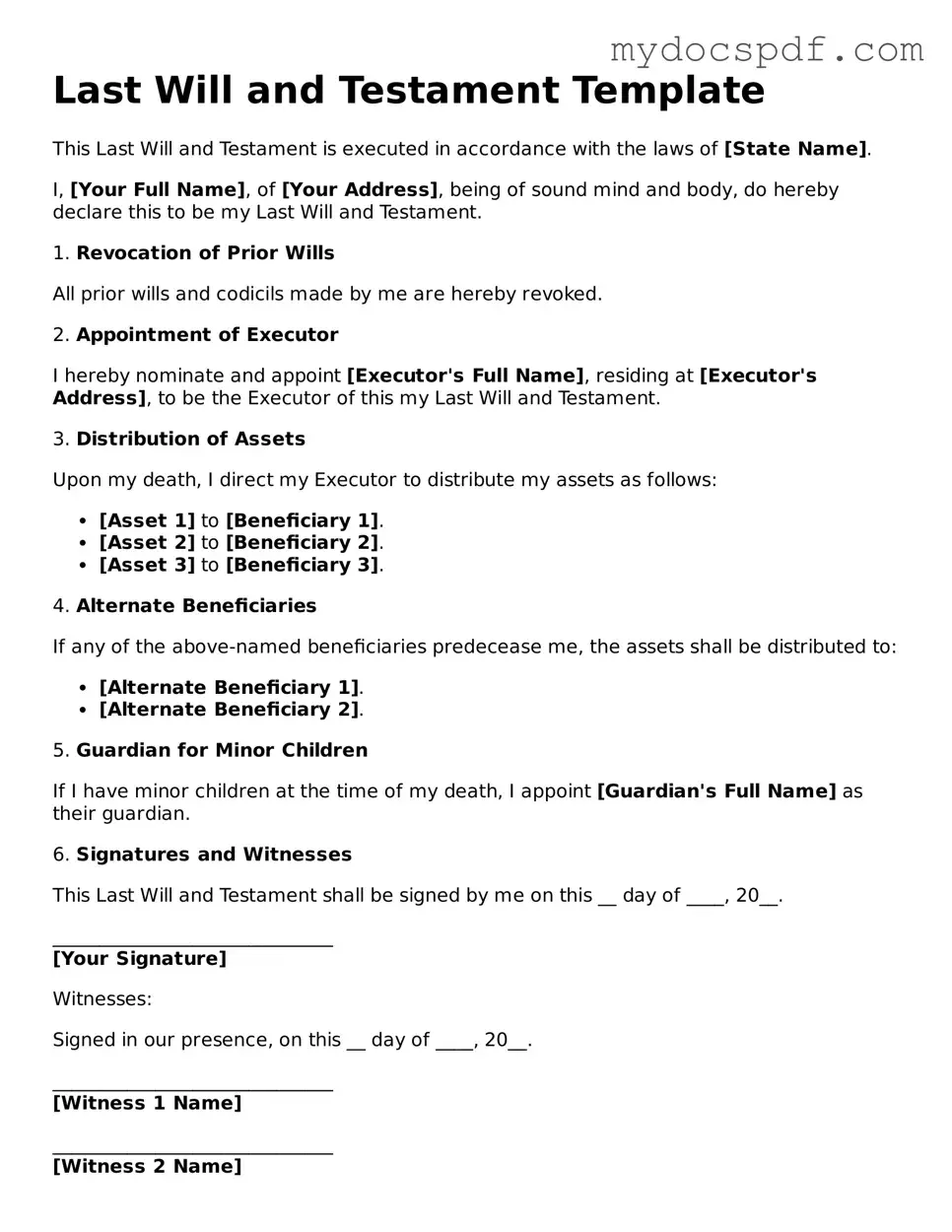Last Will and Testament Template
This Last Will and Testament is executed in accordance with the laws of [State Name].
I, [Your Full Name], of [Your Address], being of sound mind and body, do hereby declare this to be my Last Will and Testament.
1. Revocation of Prior Wills
All prior wills and codicils made by me are hereby revoked.
2. Appointment of Executor
I hereby nominate and appoint [Executor's Full Name], residing at [Executor's Address], to be the Executor of this my Last Will and Testament.
3. Distribution of Assets
Upon my death, I direct my Executor to distribute my assets as follows:
- [Asset 1] to [Beneficiary 1].
- [Asset 2] to [Beneficiary 2].
- [Asset 3] to [Beneficiary 3].
4. Alternate Beneficiaries
If any of the above-named beneficiaries predecease me, the assets shall be distributed to:
- [Alternate Beneficiary 1].
- [Alternate Beneficiary 2].
5. Guardian for Minor Children
If I have minor children at the time of my death, I appoint [Guardian's Full Name] as their guardian.
6. Signatures and Witnesses
This Last Will and Testament shall be signed by me on this __ day of ____, 20__.
______________________________
[Your Signature]
Witnesses:
Signed in our presence, on this __ day of ____, 20__.
______________________________
[Witness 1 Name]
______________________________
[Witness 2 Name]
